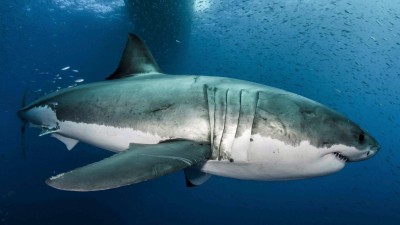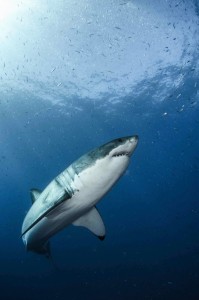NSU Newsroom
SharkBytes
Horizons
This version of NSU News has been archived as of February 28, 2019. To search through archived articles, visit nova.edu/search. To access the new version of NSU News, visit news.nova.edu.
This version of SharkBytes has been archived as of February 28, 2019. To search through archived articles, visit nova.edu/search. To access the new version of SharkBytes, visit sharkbytes.nova.edu.
Great White Shark Genome Decoded
The great white shark is one of the most recognized marine creatures on Earth, generating widespread public fascination and media attention, including spawning one of the most successful movies in Hollywood history. In a major scientific step to understand the biology of this iconic apex predator, and sharks in general, the entire genome of the white shark has now been decoded in detail. One highlight – sequence changes were found tied to DNA repair, DNA damage response and DNA damage tolerance, the exact opposite of which – genome instability – is well known to predispose humans to numerous cancers and age-related diseases.
The researchers say they have just explored the “tip of the iceberg” with respect to the white shark genome.
“Genome instability is a very important issue in many serious human diseases; now we find that nature has developed clever strategies to maintain the stability of genomes in these large-bodied, long-lived sharks,” said Mahmood Shivji, Ph.D., director of NSU’s Save Our Seas Foundation Shark Research Center and Guy Harvey Research Institute. “There’s still so much to be learned from these evolutionary marvels, including information that will potentially be useful to fight cancer and age-related diseases, and improve wound healing treatments in humans, as we uncover how these animals do it.”
You can read the full press release ONLINE.

